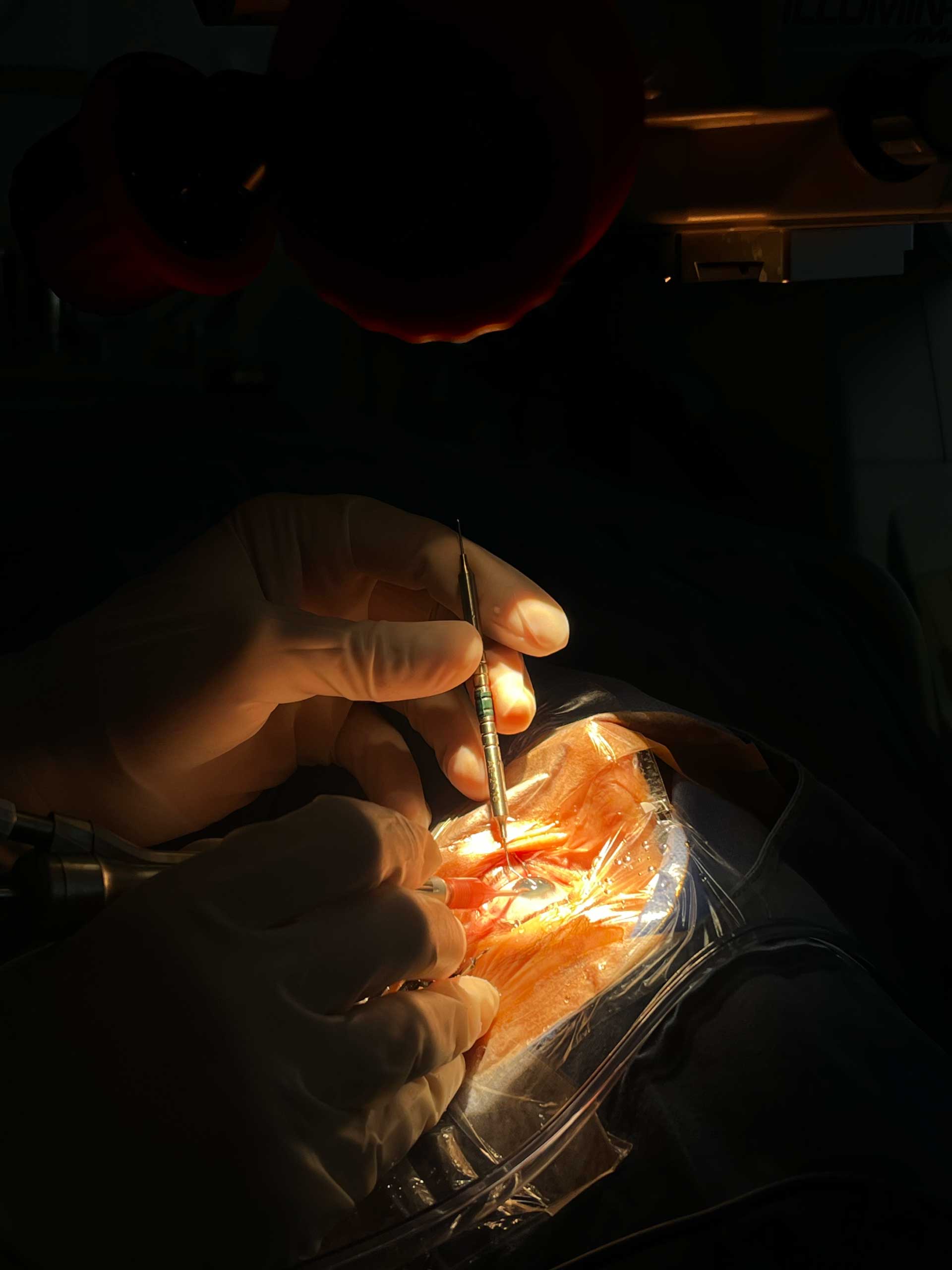One of the most complex pathologies in ophthalmology are cataracts. According to Prevent Blindness America, an organization dedicated to preventing and preserving eyesight, cataracts rank first among the eye diseases with a higher impact on the world population.
Data provided by this organization, shows that cataracts are the leading cause of vision loss in people over 40 years old worldwide; since there are significantly more cases than glaucoma, macular degeneration, and diabetic retinopathy combined.
How do cataracts develop?
Cataracts develop when proteins and fibers in the lens begin to break down and clump together making a cloudy area, causing vision to become blurry or foggy. As the cataract slowly progresses, the lens gradually turns more densely and further clouds your vision, making it more difficult to read or doing other everyday activities; and if left untreated cataracts can lead to total blindness.

Early signs
The early signs of cataracts are almost imperceptible and do not represent an immediate threat to eyesight. In the early stage, the crystalline is slightly opaque in some areas and you probably won’t notice loss of vision. You may experience blurry vision, photophobia (sensitivity to light), poor night vision, halos around lights; among others.
How many types of cataracts are there?
Cataract types include:
- Senile Cataracts
The most common age-related vision-impairing disease.
- Nuclear Cataracts
It affects the center of the lens causing nearsightedness or a temporary improvement in reading vision. But as it progresses the lens turns more dense and further clouds your vision.
- Cortical Cataracts
begins as whitish, cuneiform-shaped opacities or streaks on the outer edge of the lens cortex.
- Posterior Subcapsular Cataract
They start in the back of the outermost layer of the crystalline, right in the path of light. Often interferes with your reading vision and causes glare or halos around lights at night. It tends to progress faster than other types do.
- Pediatric Cataracts
This type of cataracts you´re born with in either one or both eyes, or can be developed within the first 3 months of life. They are associated with genetic disorders, metabolic problems, and when during pregnancy the mother develops infections; such as rubeola, toxoplasmosis, and Epstein-Barr virus.
- Metabolic Cataracts
It is associated with metabolic disorders like diabetes.
- Traumatic Cataracts
Is a clouding of the eye’s natural lens after an injury. This is usually due to blunt or penetrating trauma to the eye.
- Steroid Cataract
Produced for long-term use or high-doses of steroids like prednisolone, dexamethasone, and fluorometholone.
What is the best treatment for cataracts?
The only effective treatment to prevent or eliminate cataracts is with surgery. One of the modern day methods is Phacoemulsification (PHACO), a simple and safe operation to remove the cloudy crystalline inside your eye and replace it with an artificial one (IOL).
After a comprehensive eye exam the specialist will determine the type of IOL that better suits you according to your visual needs and lifestyle. If you suspect you have cataracts, or already have developed them, book an appointment with one of our specialists to get a full eye examination.
At Oftalmólogos El Tesoro we are committed to help you achieve the best vision possible. We want you to see the world better than before
